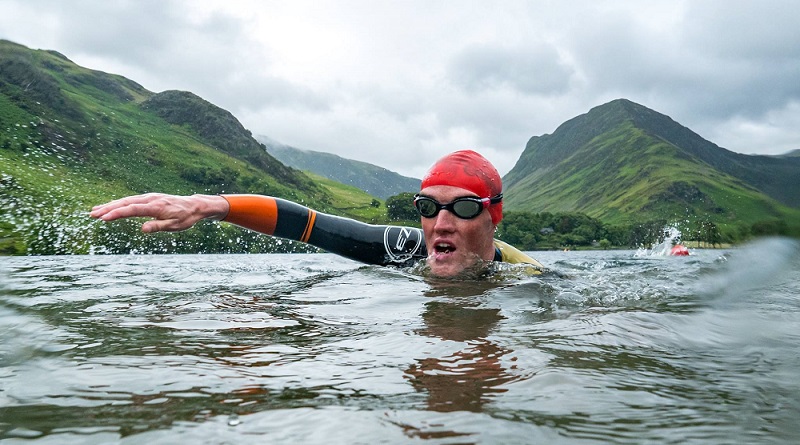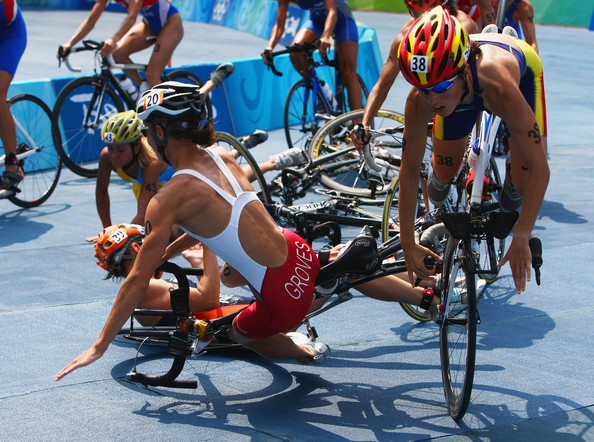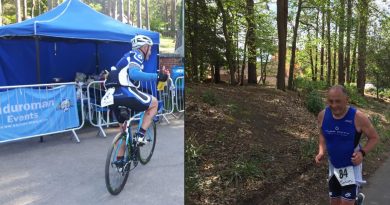Captain’s Question Time
Tuff Fitty Club Captain Tom Goddard thought it was about time to share some of the knowledge he has acquired through his stellar racing career and allow you all to have a laugh at some of the more unfortunate incidents! Questions were about any aspect of triathlon; training, nutrition, gear, etiquette, fashion, qualifying for the GB age group team, ANYTHING! Plenty of them came in from the club’s members through the forum and e-mail, and Tom has compiled his answers for you all to see below.
How do I get quicker on a bike?
Bec
It isn’t by buying the lightest, most aerodynamic, and credit card maxing gear. It is far more simple that that. Just pedal faster and ride in a higher gear!
Obviously you can’t do this straight away but by doing over-geared efforts (riding in a higher gear than you normally would) and high cadence efforts (spinning your legs faster than normal) you can learn to. Just be careful not to increase either of these too quickly otherwise your knees will hate you. The other sure fire way to get better on the bike is to ride lots of hills!
What is the worst disaster you’ve had in transition and any top tips for a fast one?
Bec
I have had many. Mostly involving being too cold to remove wetsuits/ helmets. My best has to be at the National Championships. I set up my bike before the race with the thousands of others at the event and did my usual recce run from ‘bike in’ to my racking place. Looking for landmarks to sight off and guide me to my trainers I spotted a huge inflatable bike on top of one of the trade stands right in line with my rack. Perfect!
After a great swim – bike I came in to T2 in a great position and looked for my beacon to guide me in. It had gone. A twelve foot inflatable bike had just disappeared! I ran round in a panic for what felt like an eternity looking for my trainers to no avail. I then ditched my bike on a random rack and proceeded to head out on the run barefoot. Before I made it out of transition I was collared by a race referee and told that if my bike wasn’t racked in the correct spot I would be disqualified. So back I went to slalom through the racks until I finally found my spot. Needless to say, I didn’t become the National Champion that day.
My top tips for transition;
- Find something FIXED to sight off and guide you from ‘swim in’ to your bike and from ‘bike in’ to your trainers.
- Less is more. Or at least faster. Take the absolute minimum with you.
- Talc in your bike shoes and trainers makes them easier to get on and stops you getting blisters.
- Bodyglide on the inside and outside of the cuffs and ankles of your wetsuit helps you get it off quicker.
- Wear your racebelt and number under your wetsuit.
- Elastic laces so you can slip your shoes on easily.
- Visualise T1 at the end of the swim and T2 at the end of the bike so you know exactly what you are going to do and in what order when you arrive in transition.
Have you ever been late for an event or even worse ever missed an event?
Any tips on setting alarms or how to deal with running late?
Wardy
Yes. As you well know. And keep reminding me.
I woke up the morning before Worthing and wondered why it was light when it should have still been dark. Panic set in upon the realisation that my alarm hadn’t gone off and I scooped up my bag and time trialled on the bike to the start arriving just in time to watch the swimmers running into the water. I took it really well and ended up going on a 4hr bike ride to cool off.
My tips? If you use a phone as an alarm check it is charged, the alarm is set for the right day and have a backup!
I avoid open water swimming…well, I avoid all swimming at the moment but that’s just because I’m lazy. OW-wise I have terrible problems with spotting. What advice can you give? Doesn’t seem to matter what I do, I struggle. An example being Southwater relays a couple of years back where I went from the reeds on the left of the lake to the island in the middle…and that was just on the way out. Embarrassing!!
Sim
If it is possible before the race look for things on the shore that line up with the buoys as it is much easier to look for a house or tree with steamed up goggles than a tiny inflatable.
When you are sighting and lifting your head it causes your legs to sink so make sure you increase how hard you’re kicking to prevent this from slowing you down.
The other essential thing is to swim in a straight line! A good drill for this is ‘catch-up’ where you swim with your arms out in front of you a shoulder width apart, pull with one arm at a time and bring your arms back to their starting position. This is a great drill as it makes you kick harder, strengthens your shoulders and back and most importantly teaches you to pull straight back through the water and to not cross your ‘centre line’ so that you don’t fishtail.
My question relates to the track sessions at Durrington. Throughout the winter I found them fantastic and as a result I saw my speed increase week after week. However, this is when I started to pick up injuries.
Jim
One of the main reasons for people getting injuries from track running is that their body is not conditioned to running that fast. Just because you are capable of running quicker doesn’t mean that your joints/ muscles will be able to take it. As with distance it is important to only increase distance incrementally. Drills and running off road are excellent ways to strengthen all of the small stabilising muscles around your joints which will help prevent injuries.
Another common reason for injuries at the track is overstriding. To increase your speed you need to increase your leg turnover and stride length. When increasing stride length a lot of people overstride landing with their foot ahead of them rather than beneath them. This is a sure fire way to wind up with an injury.
Why do we do so many laps at a quick pace (for me anyway) often 8 min miles as a warm up and then do the stretches? Call me old fashioned but I normally stretch before I run.
Jim
If people are running that fast for the warm up tell them to slow down! It should be about 10min/mile. The reason you have a little jog before stretching is to warm up the muscles so that they are more flexible and will stretch and wont tear.
Also whilst only running one way seems to put strain on my calves. Is there a reason we don’t do half the session turning to the left and the other half turning to the right?
Jim
If you are getting pain in your calves it may be because as people run faster they tend to land more on their forefoot. Try to land on your midfoot and the calf pain should disappear.
The reason we always run anticlockwise round the track making left hand turns is because the left side of the heart is bigger than the right, weighing down that side of the body and leading to a natural drift to the left.






